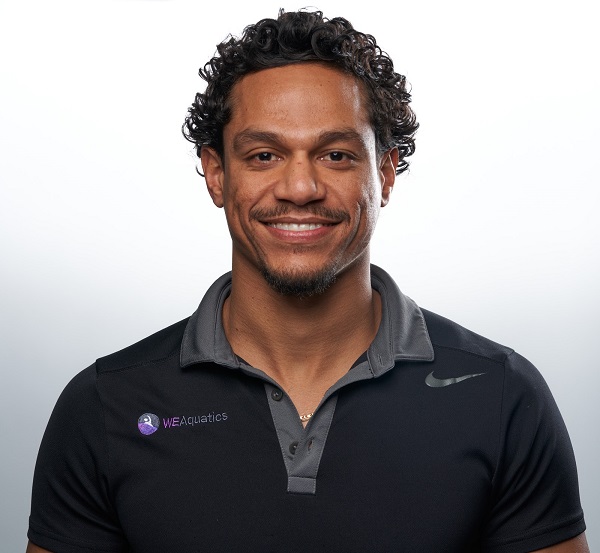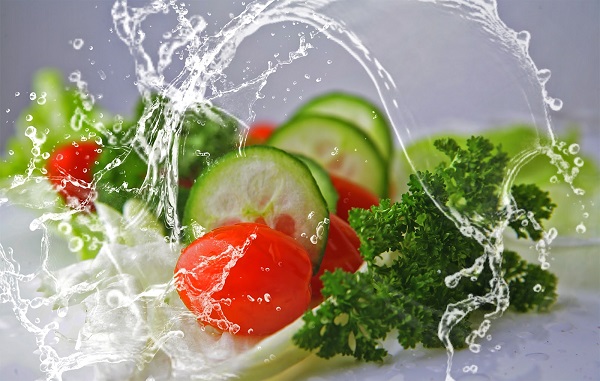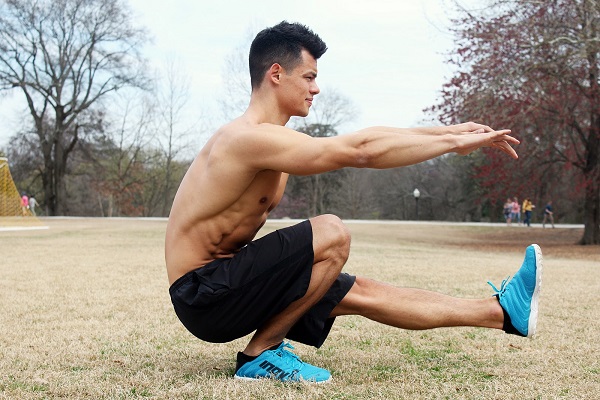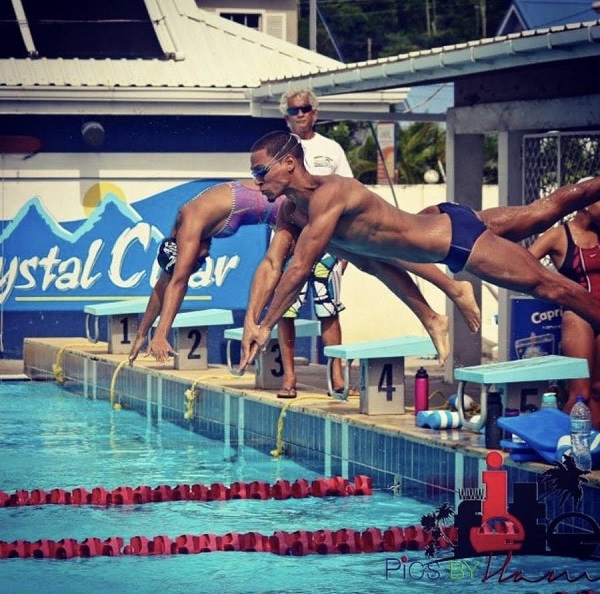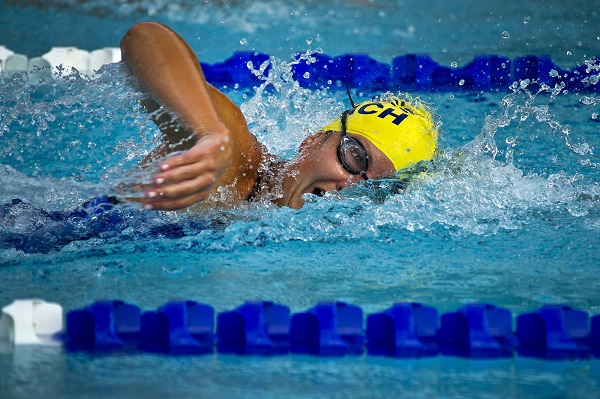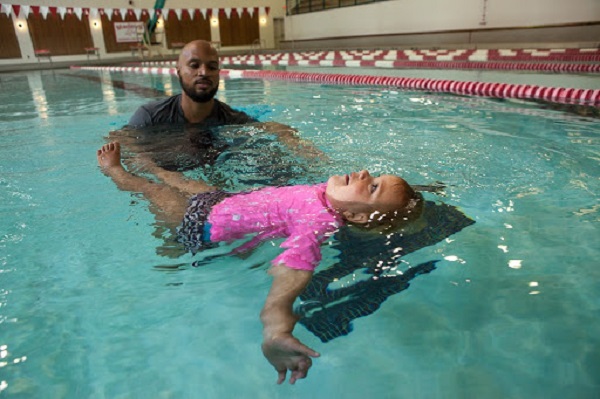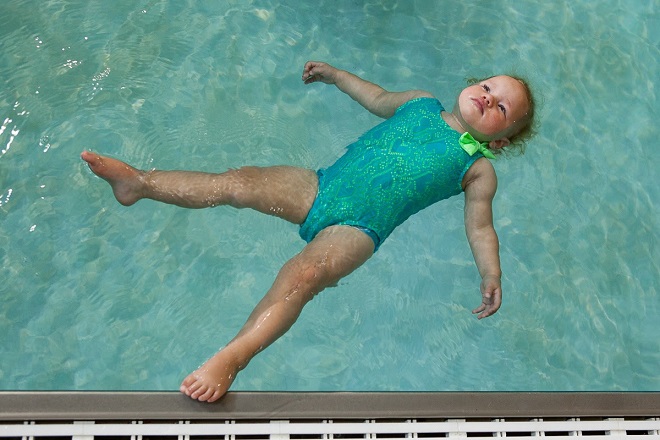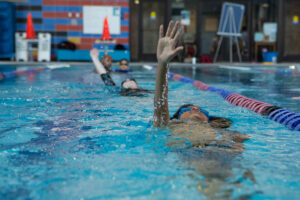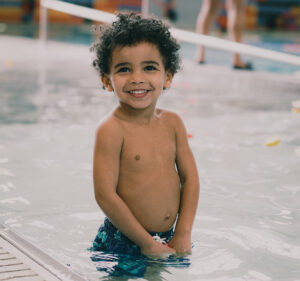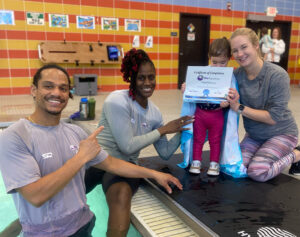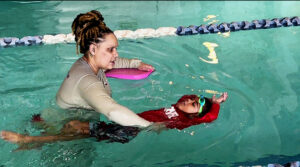Advice from WeAquatics Instructor Bradford Worrell
At WeAquatics, we care deeply about the well-being of all our swimmers. That’s why, with the help of Brad Worrell, one of our fearless leaders, we’ve compiled this list of health and safety tips for swimmers of all ages and abilities.
A Brief Background on Brad Worrell
After nearly drowning in his aunt and uncle’s pool at less than two years old and having to be saved by his father, Brad (as the story goes) came out of the water laughing and smiling, and he’s been involved with swimming ever since. In 1994, he and his family moved to St. Lucia, where he and his brothers, David and Frederick, swam for the national team. Brad went on to swim competitively at Old Dominion University, followed by Howard University.
Brad brings over twenty years of experience as a competitive swimmer and roughly ten years as a full-time swim instructor. He is a certified Infant Swimming Resource (ISR) instructor focusing on infant safety and survival swimming. He also has a level three American Swim Coaches Association certificate, and he’s a level three USA swimming coach.
Nutritional Advice for Swimmers
The food you eat directly impacts your health, as well as your performance in the pool, and while Brad isn’t a nutritionist, he can offer advice based on his personal experience and observations.
- Tip #1: Good News for All Those Swimmers out There!“Swimmers can get away with eating just about whatever they want,” says Brad. “Obviously it’s best to stick to whole foods, healthier foods, but because they burn everything off so quickly, swimmers don’t have to be overly concerned with counting every calorie.”
- Tip #2: Complex Carbohydrates Are Key“Before or after a meet, my favorite thing growing up was spaghetti. I still love spaghetti,” says Brad. “Lasagna. Fettuccine Alfredo. Basically anything with lots of carbs. It takes a lot of energy to maintain the level of activity needed for an hour or more of practice, so swimmers need those carbs. Stay with healthy carbs, though. Potatoes. Broccoli.”
- Tip #3: Don’t Neglect Vitamin-Rich Foods“Don’t neglect the greens, such as broccoli and spinach. Foods with high vitamin content can actually promote brain health and boost the immune system, so swimmer or not, you should incorporate these foods into your diet.”
- Tip #4: Recovery Hack“For recovery, chocolate milk is amazing. That’s definitely something a swimmer can have after training or after a meet,” says Brad. “It’s great for replenishing your calcium and ensuring you get the best nutritional elements to your muscles after a strenuous workout.”
Fitness Doesn’t End When Class Is Over
One of the most important health tips for swimmers to take away is that swimming is a lifelong pursuit, and the honing of the craft doesn’t have to stop when the lesson ends. With that in mind, there are many ideas for at-home exercises that any swimmer can do on his or her own.
- Exercise #1: Form Practice“Stand in front of the mirror and imagine you’re swimming,” says Brad. “A lot of swimming is about trying to keep your body in a straight line, and if you’re swimming in the mirror, you can tell if an arm is crossing over your body or if it’s way off to the outside. With this individual exercise, you can easily see if you’re pulling in a straight line along the core of your body, and you can do this for all the strokes, which is really helpful.”
- Exercise #2: Superman Stretch“Swimming requires a lot of core muscles, especially your back core, so we definitely recommend the Superman stretch. This can take away a lot of pressure from your shoulders and joints, where people generally find they get injured,” says Brad.
- Exercise #3: Muscle-Targeted Workout
“To build the strength to push off the walls and to have good solid dives, we recommend push-ups, ab crunches, squat jumps, and lunges,” says Brad. “These can all be done individually at home to improve one’s swimming performance.”
- Important Note about Self-Guided Exercise“Improving fitness really comes down to the person. You have to figure out how you want to push yourself and where your limits are,” says Brad. “Improvement is largely about gradual progress, and you really have to listen to your body. Fortunately, the more you do it, the more in tune you become to it and the easier it is to safely push yourself a little bit further.”
Lifelong Safety Benefits of Swim Lessons
In addition to the health-related benefits of swim lessons (stronger muscles, improved kinesthetic intelligence, better coordination, and so on), learning to swim also presents opportunities for increased overall safety at every age.
- Safety Benefit #1: A Healthy Fear of Water“A lot of people don’t think about it this way, but the biggest benefit of swim lessons is actually a healthy fear of the water,” says Brad. “As an instructor, I’ve seen students on both ends of the spectrum. Some students quite literally dive in and really enjoy it and others need a lot of coaxing into the water. Whether overconfident or unsure, students need to be brought into the middle—where they are exploring the sport in a fun, safe way that also respects the consequences.”
- Safety Benefit #2: Low-Impact All-Body Workout“When you learn to swim, you’re entering a sport that can take you all the way through life. It’s definitely a safe outlet for persons of all ages to enjoy fitness. Lots of swimmers in their sixties or seventies swim every day because it’s a great all-body workout that doesn’t cause aches or joint pain,” says Brad.
- Safety Benefit #3: Water Safety for Infants“The safety benefits of our ISR [Infant Swimming Resource™] classes are clear,” says Brad. “ISR is really about preventing drownings by teaching students as young as six months old to save themselves if they fall into water.”
“One of the biggest benefits I’ve noticed with ISR classes, though, is cognitive development. The earlier a child starts, the faster these skills develop. I’m always trying to explain to my students, no matter their age, this is what we’re about to do. This is what I need you to do. I’m trying to communicate this whether they’re six month old or three years old. With that comes a certain understanding that these lessons are for this, and we’re going to enjoy the water, but safety is our first priority. ISR gives these students the best head start they can get as far as being safe in the water and being exposed to actual swimming.”
We sincerely hope everyone in the WeAquatics family is healthy, safe, and well. If you have any questions about how to keep working on your swimming technique from home, feel free to reach out. Remember, we might not be in the pool right now, but we’re always here to help!

